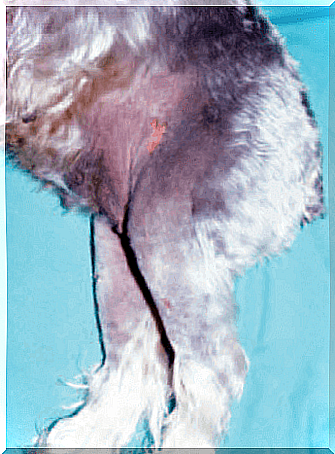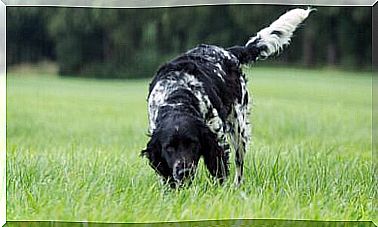Schnauzer Syndrome

Miniature schnauzer syndrome, also known as sterile pustular erythroderma or superficial necrotic suppurative dermatitis, is a disease unique to this canine breed. We will describe it below.
If you have a schnauzer, keep this in mind
The miniature schnauzer is one of the most sought after breeds of dogs because it is small animals with a calm character, perfect for city life.
In addition, it is necessary to highlight the predisposition of other small breeds – such as the French bulldog – to need frequent veterinary consultations, while schnauzers are usually in good health.

However, it is true that they tend to develop diseases of genetic origin, such as some dermatoses – for example, the one we will describe below – kidney diseases, retinal atrophy or hypothyroidism, among others.
To prevent them, it is necessary to know them and maintain adequate control of symptoms through regular veterinary consultations. In this way, it will be possible to guarantee sufficient health and quality of life for our pet.
Schnauzer Syndrome: brief description
We are talking about a disease classified as rare. It causes a severe skin condition that occurs exclusively in miniature schnauzers. A similar syndrome has been described in other dog breeds. However, while the first case described in history was related to the use of herbal shampoos in schnauzers, in the rest of the races no similar connection was observed.

Etiology
The causative agent of this disease is still unknown, but an adverse reaction to different allergens or immunogens absorbed during the use of hygiene products or other similar chemicals is suspected.
Schnauzer syndrome symptomatology
- General symptoms : it is common the appearance of fever accompanied by depression and lethargy.
- Cutaneous symptoms : alopecia and erythema, usually on the trunk, although cases in which the head or extremities have been affected have been described.

The appearance of darker and more edematous spots, sometimes with a tendency to suppurate, is highlighted. Pustules and blisters may appear due to the high temperature of the affected area. And in areas where the erythema worsens, erosion, ulceration and skin necrosis may appear.
disease evolution
In the beginning, the lesions are localized, but they quickly generalize and affect the internal organs. Blood tests show signs of inflammation and very low levels of albumin. Signs of heart, lung, and liver damage may also appear, which may be an indication of future systemic failure.
Schnauzer syndrome diagnosis
In summary, the diagnosis will be made by the compilation of the clinical symptoms mentioned and the relevant laboratory tests. Among these exams, the biopsy of the skin lesions stands out, in order to proceed with their microscopic analysis.

Finally, a differential diagnosis must be made with other cutaneous pathologies, some even of toxic origin. The most similar is known as Sweet’s syndrome or sterile neutrophilic dermatosis. The two are quite similar and are sometimes considered to be related phenomena.









